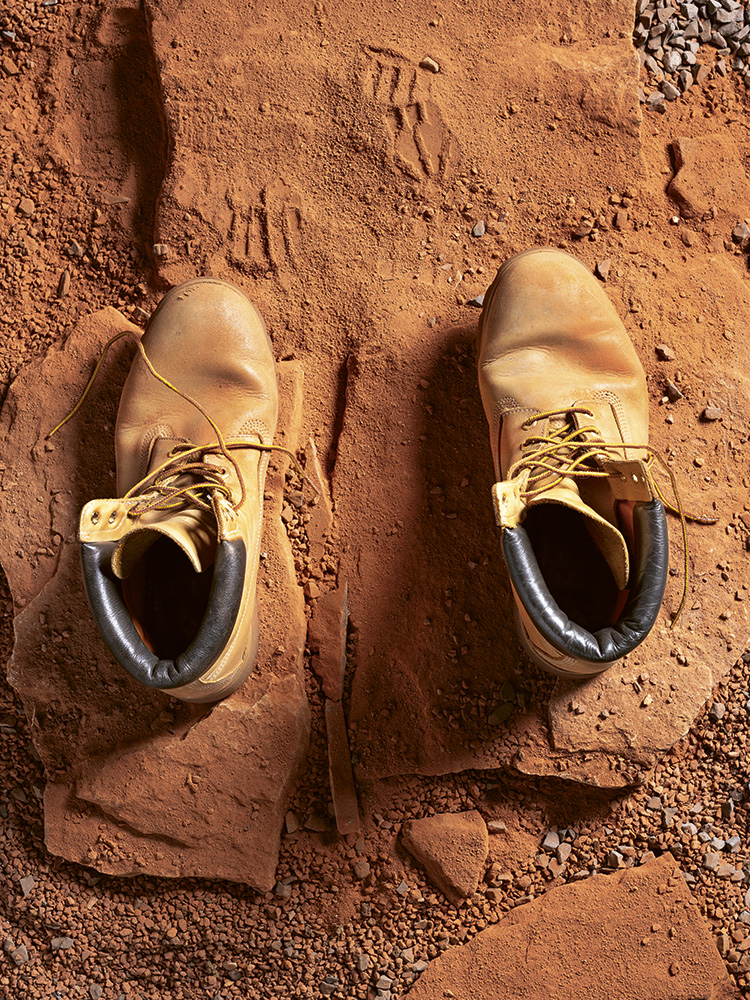Development aid from Africa.
Interview: Urs Hafner
Western Europe was successfully reconstructed after the devastation of World War II. This wouldn’t have been possible without raw materials from Africa, says historian Danelle van Zyl-Hermann.
UNI NOVA: World War II left Europe in ruins. Reconstruction efforts began thanks to support from the United States. But you say this isn’t strictly true.
Danelle van Zyl-Hermann: Yes, things were more complex than the schoolbooks would have us believe. The billions of dollars from the Marshall Plan certainly supported the revitalization of Europe, but bear in mind that this was the start of the Cold War, and the USA was also pursuing ideological interests vis-à-vis the Soviet Union. The assistance that Western Europe received from Africa was equally crucial. Without Africa, Europe would not have been able to develop the economic momentum that continues to leave its mark to this day.
What form did this assistance take?
Raw materials — and Africa didn’t exactly have a say in the matter. I’m studying three cases: what is now the Democratic Republic of the Congo, Ivory Coast and Zimbabwe. They had been Belgian, French and British colonies since long before World War II, and they continued to be ruled by the Europeans after the war.
Which raw materials did Europe require?
Everything. My study concentrates on copper, timber and asbestos because these were crucial to rebuilding Europe. In this period, copper was the most important metal for infrastructure: for industry, particularly the arms industry, and for railroads, telecommunications and electrical systems in residential buildings. Up until 1939, the USA had been the main supplier of copper, but now it needed that copper for itself. In Europe, only the Soviet Union had copper, but the West didn’t want to become dependent on the Communists.
Why the focus on timber and toxic asbestos, of all things?
Europe urgently needed hardwood, particularly for coal mining, as coal was its main source of energy. Tunnels in coal mines were supported by props made from tropical timber. Asbestos is resistant to heat and acid, so it was seen as an absolute wonder material — it was used in cement, insulating materials, paint and in clothing such as firefighter suits. Europe had no asbestos reserves of its own. A few companies knew it was toxic back in 1950, but this didn’t come to public attention until the 1980s.
Germany was completely destroyed, and yet it still achieved its much-acclaimed “economic miracle.” But this defeated country didn’t have any colonies.
We don’t yet know exactly what happened to African raw materials imported to Europe, which countries used them for themselves or sold them on to their neighbors. It’s likely that Germany used U.S. dollars from the Marshall Plan to, for instance, buy copper from Belgium that came from the Democratic Republic of the Congo.
Was Africa able to profit in some way from Europe’s insatiable demand for raw materials?
No. Of course, Africans understood they were being exploited. But their primary goal in this period was political independence. The colonial powers had shown them that only those with political power can make decisions. Many countries were able to cast off the colonial yoke in around 1960.
So Africa enabled Europe to make a fresh start in 1945. Are you turning history on its head?
The typical narrative is that Europe invested in Africa after the war, both by modernizing the colonies and by providing development aid. But how would a ruined Europe have injected money into Africa? It had to get back on its own feet first — with help from Africa. So yes, I’m inverting the usual narratives. I’m challenging established perspectives.
Has Europe always exploited Africa?
That’s too simplistic and presents Africa as nothing more than a victim. In fact, the Americas as well as the African and Arab elites profited from the transatlantic slave trade. But from Africa’s perspective, World War II wasn’t some sort of critical juncture; the term “post-war period” isn’t common there. Africa continued to supply raw materials. The USA used uranium from Central Africa to build the atomic bombs they dropped on Japan.
If the West hadn’t had access to Africa’s raw materials, it wouldn’t have experienced unparalleled economic growth — and we wouldn’t be facing a climate catastrophe now, would we?
Yes, Western access to African raw materials accelerated industrial production and the culture of consumption that have fueled the climate crisis. And even the “green” solution to the crisis — which affects Africa much more than the West — isn’t possible without African raw materials, especially lithium.
Danelle van Zyl-Hermann is a social historian at the University of Basel specializing in South Africa and Kenya from the 20th century to the present day. She is currently studying Africa’s role in the reconstruction of Europe after World War II.
More articles in this issue of UNI NOVA (November 2025).

